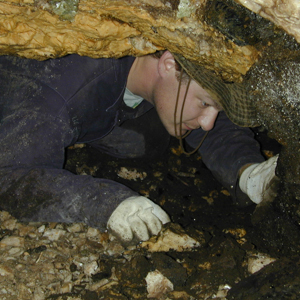Categories
Archives
 There is nothing cooler or more exhilarating than being in an amazing place in the outdoors or underground, reaching into a freshly opened pocket, and pulling out an awesome crystal specimen that no human eyes have ever seen before. Welcome to mineral collecting at its best!
There is nothing cooler or more exhilarating than being in an amazing place in the outdoors or underground, reaching into a freshly opened pocket, and pulling out an awesome crystal specimen that no human eyes have ever seen before. Welcome to mineral collecting at its best!
(If you are a beginner and have somehow landed here without already reading Seven Easy Things You Can Do to Start Mineral Collecting, I introduce my thoughts on field collecting there, so you might want to read that first and then come back here.)
Field collecting is a unique part of collecting minerals. I know some places in the world are great for field collecting and others are not, and I know not everyone can easily get out to a mineral locality. But it is the one aspect of the pursuit of minerals where you can put together and make sense of the geology, mineralogy and mineral identification techniques. And it is in many ways the most challenging component of mineral collecting, as it is not easy to hunt down and then successfully collect a truly fine mineral specimen. So I hope you’ll find a way to try it out. Don’t be daunted – you can absolutely learn all you need to know and you can go out and find a great crystal specimen for yourself, if you want to. And you can choose any type of field collecting from adventurous underground work to easy outdoor collecting.
As I wrote in Seven Easy Things You Can Do to Start Mineral Collecting, your local mineral club will often be a great way to become introduced to field collecting. Aside from collecting with a club or a guide, there are still many places in the world where you can obtain a guidebook, arrange the necessary permissions and collect minerals yourself. (If you haven’t yet read Important Note about Mineral Localities, please do.)
Assuming you have permission or it is otherwise permitted (such as on some public lands, depending on local laws), mineral collecting is something you can do just about anywhere there are exposures of rock containing interesting minerals. Kinds of field collecting localities include active and inactive mines and quarries, road construction sites and road-cuts, old prospecting localities, natural outcroppings in mountain areas, along ocean shores, lake shores and river valleys. If you research an area, you may find local mineral collecting guides (for example there are many for regions in Canada and the United States) and old geological reports or mining reports that may also provide helpful locality information.
Field collecting tools can be as simple as a prospector’s hammer (preferably an all-steel Estwing), a chisel, gloves, hard-soled steel-toed boots, a hardhat and protective eyewear like goggles. (Please see Important Safety Information.) Depending on the locality, a long-handled spade and smaller digging tools will also usually be very helpful. A heavy duty bucket and wrapping material (newspapers, paper towel) are also essential. If you find anything worth bringing home, it is necessary to carefully wrap it and protect it. Damaged minerals are not good enough for your collection in the long run, so make sure you don’t cause damage yourself!
Field collecting techniques vary, and they depend mostly on the nature of the occurrence, the geology and the minerals themselves. For example, some minerals occur in open cavities and are extracted using tools – hammers, chisels, sometimes also drills and saws. Other mineral occurrences may involve collecting vein material and then using acids to uncover crystal specimens back at the workshop at home. Often the best way to learn about collecting techniques for the first trips is to learn from other more experienced collectors who will likely be very happy to share their knowledge with you.
There are also many writings about field collecting, including the classic book “Field Collecting For Gemstones and Minerals” by John Sinkankas, and descriptions of specific collecting projects are contained in many of the articles in the periodicals The Mineralogical Record and Rocks and Minerals. Have a look around and see what you are able to find to learn about field collecting.
And then once you are out in the field, you’ll find that you learn a lot about minerals and mineral collecting that no other experience will teach you.


